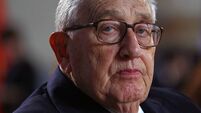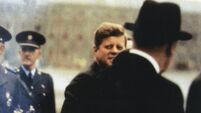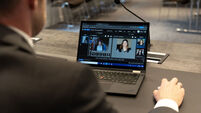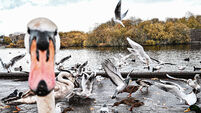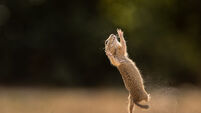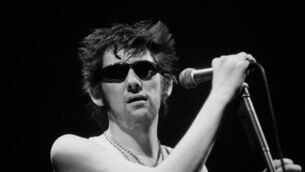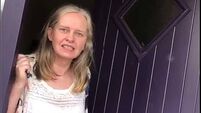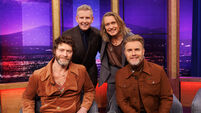White House plans omitted the Rebel County. But John F Kennedy insisted on visiting Cork

President John FKennedy at Cork City Hall with Lord Mayor of Cork Sean Casey. File picture
White House planners did not include Cork in the first draft itinerary they prepared for President John Fitzgerald Kennedy's famous visit to Ireland in June 1963.
But that was quickly changed one day after the president called his cigar-smoking press secretary Pierre Salinger into his office in Washington.
Mr Kennedy, who had earlier overruled his aides who did not want him to visit Ireland at all during his 10-day European tour, told him he must visit Cork.
No reason was given for the president’s insistence, but Salinger surmised during a visit to Ireland two weeks before JFK’s arrival that it was probably due to the president’s forebears, the Fitzgeralds, being from the county and therefore a part of his family heritage.
On his way into the City Hall in Cork to be conferred with the Freedom of the City by Lord Mayor Sean Casey, on June 28, 1963, the president shook hands with a number of Fitzgerald men from the Skibbereen area. All were farmers.
HISTORY HUB
If you are interested in this article then no doubt you will enjoy exploring the various history collections and content in our history hub. Check it out HERE and happy reading
Later, in his address to the 1,000 invited guests, he mentioned how he had met with “four rather angry Fitzgeralds”, who told him they were tired of hearing about the Kennedys of New Ross and asked him what about the Fitzgeralds.
“I said that was because my grandfather, John F Fitzgerald, who was mayor of Boston, used to tell everybody he was from Limerick or Donegal, Galway, or anywhere.”
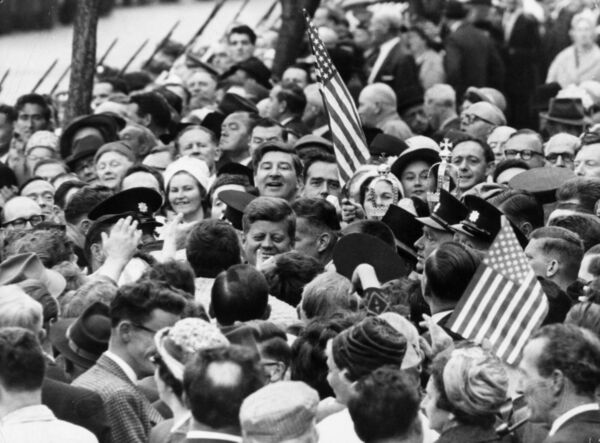
The grandfather he referred to was the celebrated “Honey Fitz”, who was three times Mayor of Boston. His first term was from 1906 to 1908, after the death of Mayor Patrick Collins, who was born in Fermoy, Co Cork.
Fitzgerald was defeated in the next election but was returned to office again from 1910 to 1914. He also served in the US Congress, had the gift of the gab, could sing like a lark and was a natural, old-style politician.
Patrick J Kennedy, whose own father had emigrated from New Ross, was initially an opponent of “Honey Fitz”, the son of another Irish emigrant, Tom Fitzgerald, from Bruff in Co Limerick.
But they later became political allies and were also united through the marriage in 1914 of their respective offspring, Joseph P Kennedy and Rose Fitzgerald.
Rose Fitzgerald was the eldest daughter of Honey Fitz and his wife Josie Hannon, whose father Michael was from Lough Gur and whose mother Mary Anne was a Fitzgerald from Bruff.
Joseph P Kennedy was the eldest son of Patrick J Kennedy and his wife, Maura Hickey, whose father James came from Cork. His wife, Margaret Field, was also Irish, and may have been from Cork as well.
Politics was never far from Honey Fitz’s mind and he was reputed to have held an election meeting in Kenmare, Co Kerry, during his 1908 visit during which he urged the locals to write letters to their relatives in Boston asking them to vote for him.
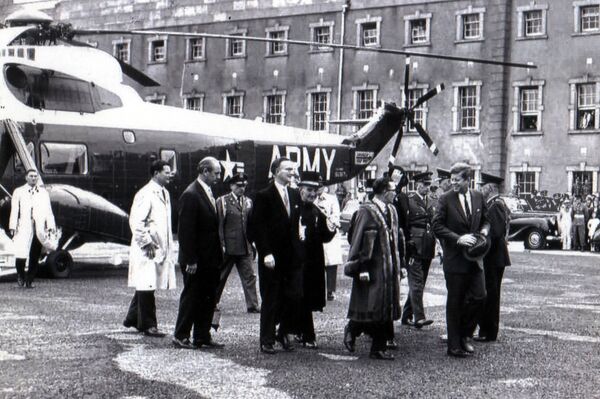
Mr Kennedy’s family links with Cork, through his Hickey great grandmother, were probably not the only reasons he insisted on coming to the city.
His wife Jacqueline’s maternal great grand parents, James Lee and Mary Norton, also travelled to the US from Cork. She visited Ireland as a 21-year-old in 1950, attended the Dublin Horse Show, travelled to Cork to find out more about her maternal roots, and is said to have kissed the Blarney Stone.
But the Cork connections did not end there because Kennedy’s closest and trusted aides, Dave Powers and Larry O’Brien, were both from West Cork, albeit once removed. He introduced each of them in the City Hall during his visit.
Powers was his right-hand man from his first political campaign in Boston in 1946 to his death in Dallas in 1963.
He later became the first curator of the Kennedy Presidential Library and Museum. A gifted storyteller with quick-fire wit, his father John Powers was from Rodeen, Castletownbere, while his mother, Catherine, was a Green from Ardra, Bere Island.
Larry O’Brien, who was later appointed US postmaster general by President Lyndon Johnson, directed Mr Kennedy’s senatorial (1952) and presidential (1960) campaigns, was with him in Dallas and also with his brother Senator Bobby Kennedy when he was assassinated in Los Angeles.
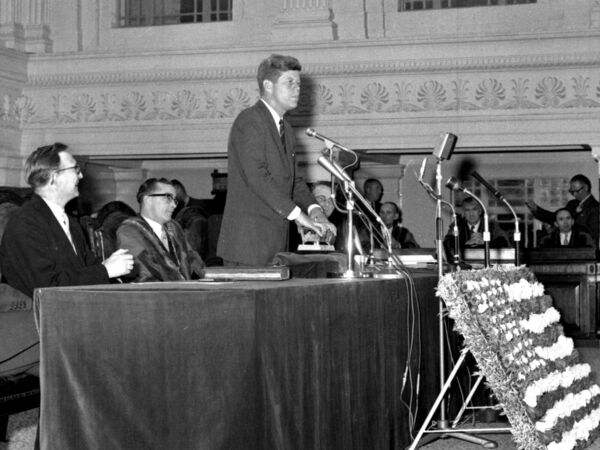
A brilliant electoral strategist, he was chairman of the Democratic national committee when his office in the Watergate complex in Washington was burgled in 1972, setting off one of the major scandals in US political history, leading to the president, Richard Nixon’s resignation.
O’Brien, whose namesake father was from Skibbereen and his mother Myra, who was a Sweeney from Dunmanway, later came to Glengarrriff to work on his memoirs —
Before leaving Washington for his European tour, Mr Kennedy had arranged for all members of the White House staff of Irish descent to be flown to Ireland for his visit. He also assigned somebody to find out which of his staff members had relatives still living in Ireland.
As a result, several first cousins of Dave Powers as well as Larry O’Brien’s aunt, Julia Sweeney from Dunmanway, his mother’s youngest sister, were among those present in Cork City Hall for his address.
Mr O’Brien later wrote that the visit to Ireland moved Mr Kennedy and rekindled in him a sense of his Irish heritage.
That was certainly to the fore when he travelled through the streets of Cork from Collins Barracks in a motorcade of 14 vehicles to the City Hall.
An estimated 100,000 people turned out to greet Kennedy. A White House photographer captured the enormity of the welcome on St Patrick’s St. The photo shows people 20 deep in places.
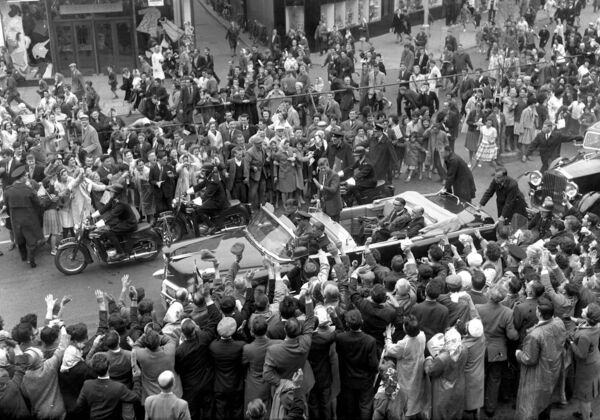
A few moments later in the Grand Parade, he took delight in a sign attached to a tree. It read: “Don’t worry, Jack. The Iron Curtain will rust in peace.”
Another sign on a business premises read “Closed. Gone to Meet President Kennedy.”
The president probably also saw the humour in the huge crane that a certain Cork-based businessman from Glenflesk in Co Kerry had parked near the City Hall a few days earlier. Suspended from the crane was the sign: “Cranes for Hire. Any Obstacle in the president’s way, ring Wm. O’Brien.”
But there was a moment of panic when the Secret Service detail temporarily lost sight of the president in Cork City Hall. They were told he had merely slipped into a toilet to answer a call of nature.
An anxious agent charged down the marble stairs, pulled a pistol from his belt and took up duty outside a window facing Anglesea St. Some people thought it was over reaction. But it has since emerged there was a reason for the jitters.
Declassified papers from the Department of Justice made public in 2006 revealed that several death threats were made against the president while he was in Ireland. Each was a hoax.
But the gardaí took extra precautions In a pragmatic assessment, Garda Commissioner Daniel Costigan briefed the department that any attempt on the life of the president was most unlikely.
The USS Norris, a destroyer which eight months earlier was one of the ships standing off Cuba during the missile crisis that almost led to nuclear war, also dropped anchor in Cork Harbour and stayed there until he had departed the country.
- This article was first published on June 29, 2013
